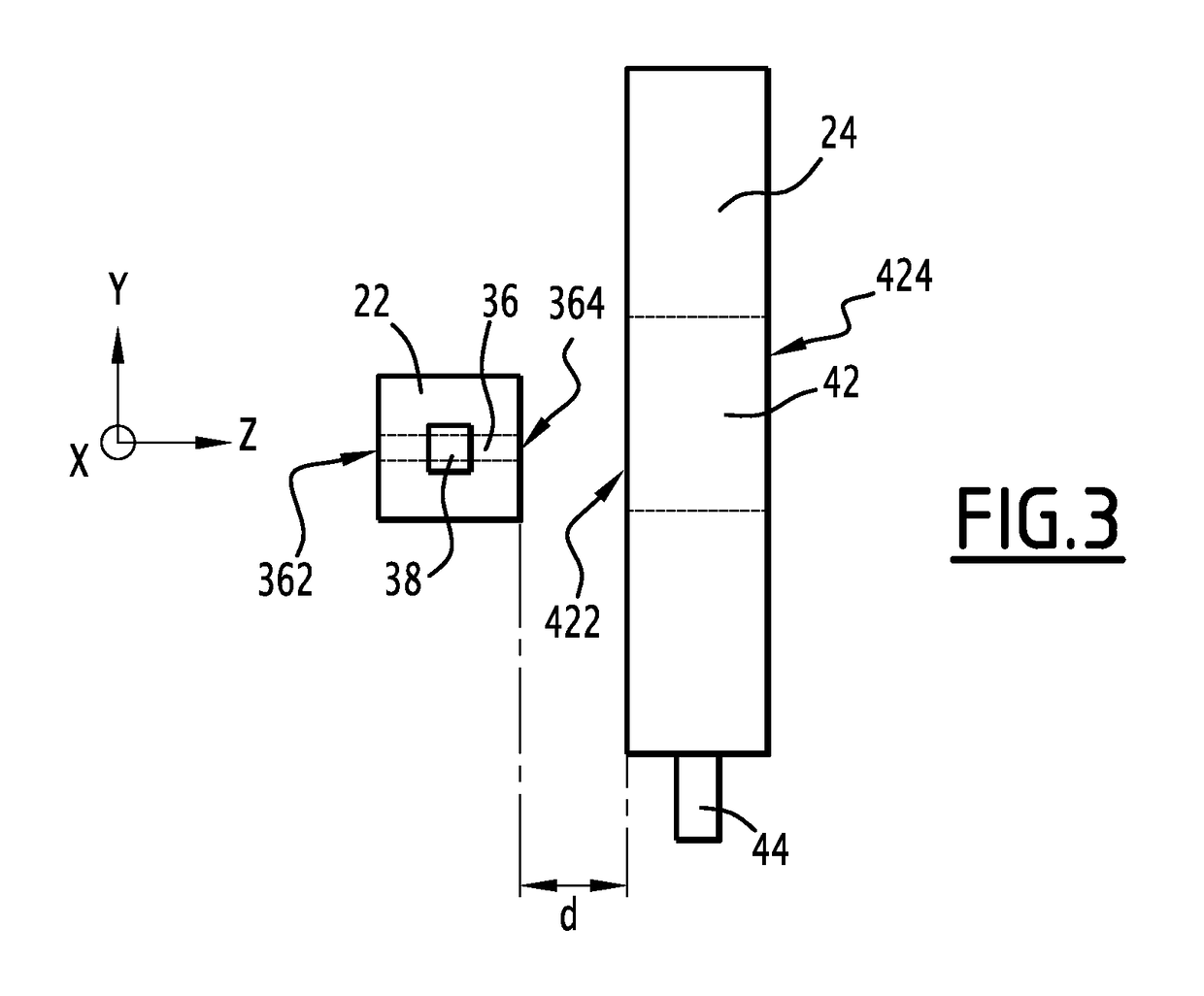Method for analyzing a sample with a non-linear microscopy technique and non-linear microscope associated
a microscopy and sample technology, applied in the direction of instruments, optical elements, fluorescence/phosphorescence, etc., can solve the problems of weak light power, weak light power, and limited versatility of this approach, and achieve the effect of high speed
- Summary
- Abstract
- Description
- Claims
- Application Information
AI Technical Summary
Benefits of technology
Problems solved by technology
Method used
Image
Examples
Embodiment Construction
[0055]For the remainder of the description, a longitudinal direction is defined: the longitudinal direction corresponds to the general direction of the propagation of light. Two transversal directions perpendicular to the longitudinal direction are also defined, the first transversal direction being further perpendicular to the second transversal direction. The longitudinal and transversal directions are respectively symbolized by an axis Z and axes X and Y on FIGS. 1 to 3.
[0056]A two-photon microscope 10 adapted to achieve a two-photon microscopy on a sample 12 is represented on FIG. 1.
[0057]Alternatively, the microscope 10 may be any microscope able to achieve a non-linear microscopy technique. Such microscope is called a non-linear microscope.
[0058]The sample 12 is, for instance, a soft tissue. In the meaning of the present invention, a soft tissue is an organic tissue, which can have an animal or vegetal origin. For instance, such a soft tissue can be a muscle or any portion of ...
PUM
| Property | Measurement | Unit |
|---|---|---|
| angle | aaaaa | aaaaa |
| angle | aaaaa | aaaaa |
| time | aaaaa | aaaaa |
Abstract
Description
Claims
Application Information
 Login to View More
Login to View More - R&D
- Intellectual Property
- Life Sciences
- Materials
- Tech Scout
- Unparalleled Data Quality
- Higher Quality Content
- 60% Fewer Hallucinations
Browse by: Latest US Patents, China's latest patents, Technical Efficacy Thesaurus, Application Domain, Technology Topic, Popular Technical Reports.
© 2025 PatSnap. All rights reserved.Legal|Privacy policy|Modern Slavery Act Transparency Statement|Sitemap|About US| Contact US: help@patsnap.com



